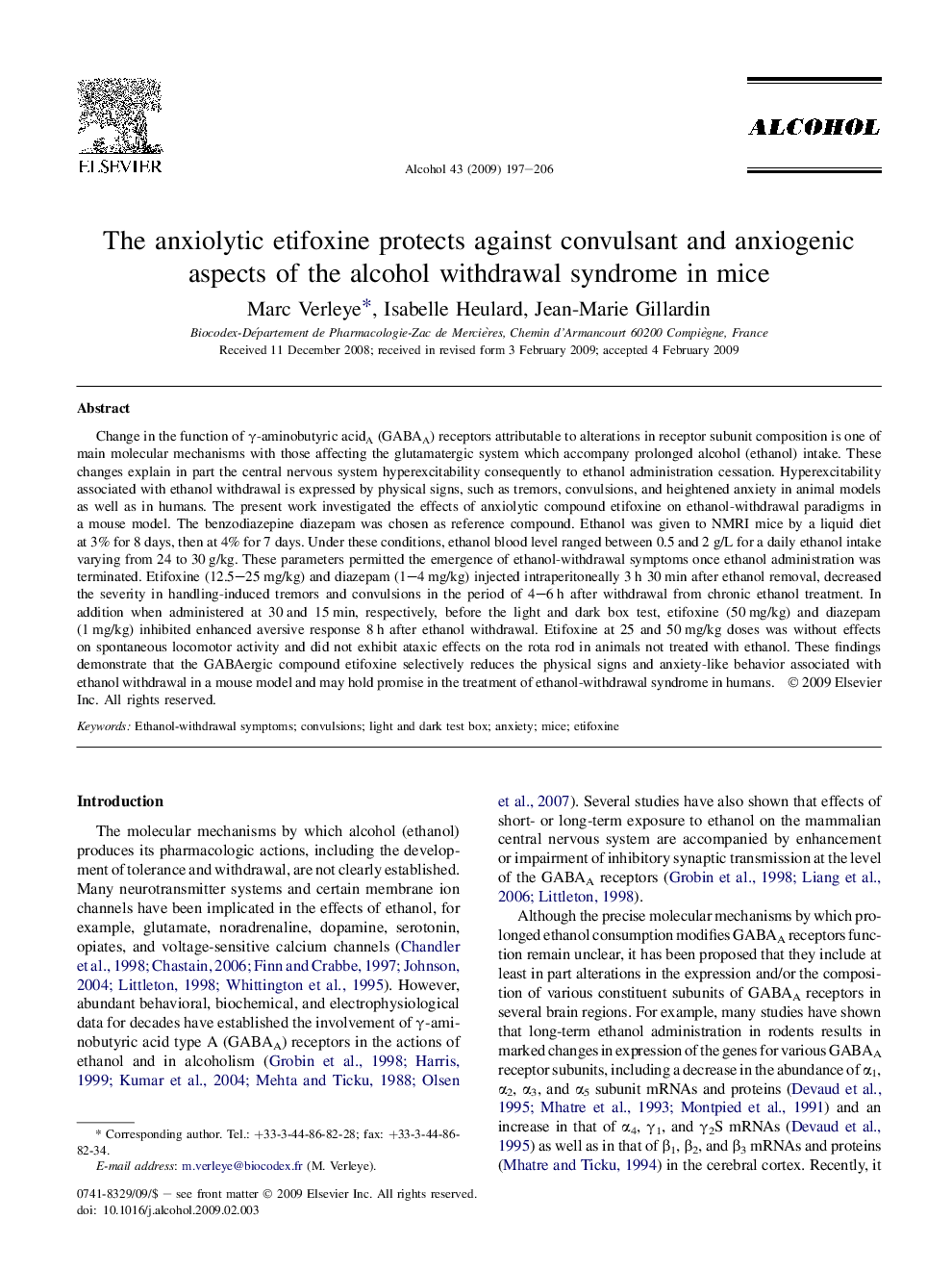| Article ID | Journal | Published Year | Pages | File Type |
|---|---|---|---|---|
| 1067738 | Alcohol | 2009 | 10 Pages |
Change in the function of γ-aminobutyric acidA (GABAA) receptors attributable to alterations in receptor subunit composition is one of main molecular mechanisms with those affecting the glutamatergic system which accompany prolonged alcohol (ethanol) intake. These changes explain in part the central nervous system hyperexcitability consequently to ethanol administration cessation. Hyperexcitability associated with ethanol withdrawal is expressed by physical signs, such as tremors, convulsions, and heightened anxiety in animal models as well as in humans. The present work investigated the effects of anxiolytic compound etifoxine on ethanol-withdrawal paradigms in a mouse model. The benzodiazepine diazepam was chosen as reference compound. Ethanol was given to NMRI mice by a liquid diet at 3% for 8 days, then at 4% for 7 days. Under these conditions, ethanol blood level ranged between 0.5 and 2 g/L for a daily ethanol intake varying from 24 to 30 g/kg. These parameters permitted the emergence of ethanol-withdrawal symptoms once ethanol administration was terminated. Etifoxine (12.5–25 mg/kg) and diazepam (1–4 mg/kg) injected intraperitoneally 3 h 30 min after ethanol removal, decreased the severity in handling-induced tremors and convulsions in the period of 4–6 h after withdrawal from chronic ethanol treatment. In addition when administered at 30 and 15 min, respectively, before the light and dark box test, etifoxine (50 mg/kg) and diazepam (1 mg/kg) inhibited enhanced aversive response 8 h after ethanol withdrawal. Etifoxine at 25 and 50 mg/kg doses was without effects on spontaneous locomotor activity and did not exhibit ataxic effects on the rota rod in animals not treated with ethanol. These findings demonstrate that the GABAergic compound etifoxine selectively reduces the physical signs and anxiety-like behavior associated with ethanol withdrawal in a mouse model and may hold promise in the treatment of ethanol-withdrawal syndrome in humans.
